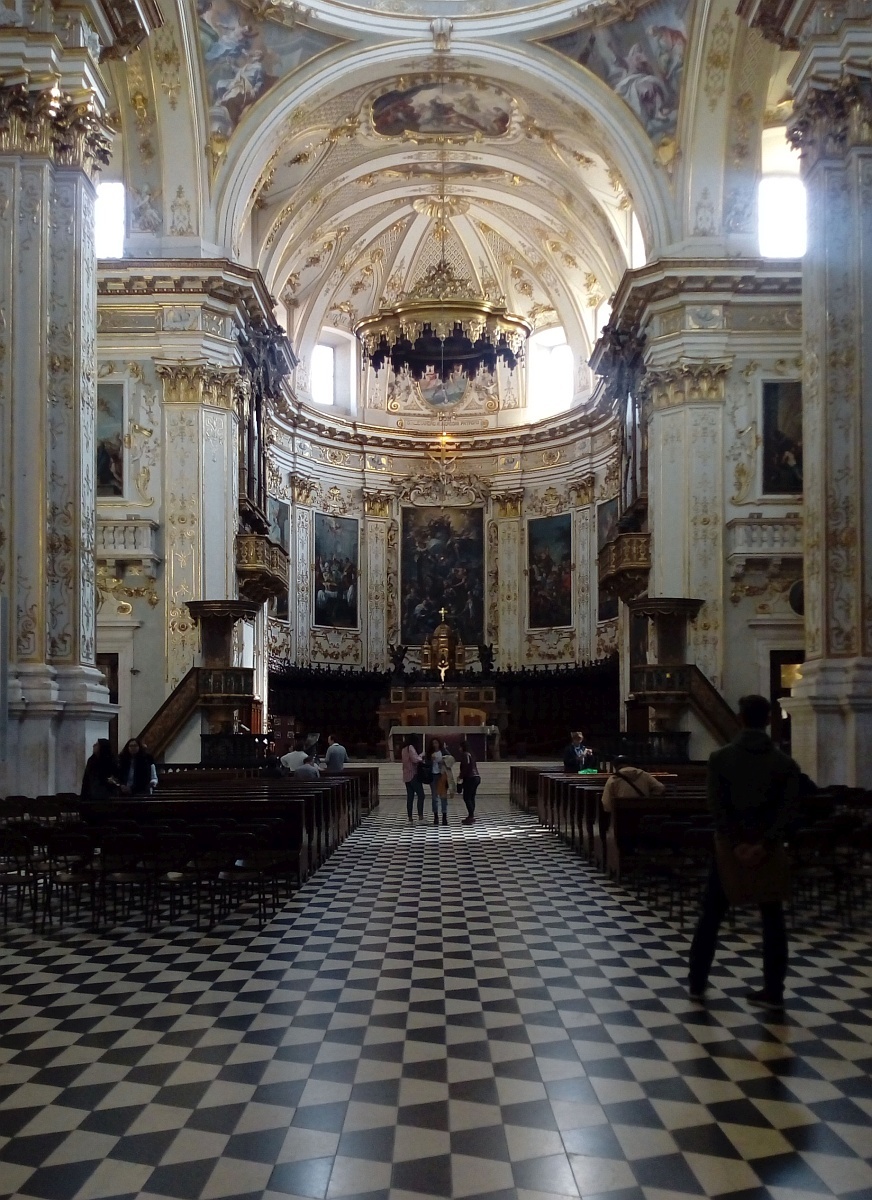The Cathedral, or “Duomo”, is located in Piazza Duomo, in the heart of the Old Town: this area was already a sacred place in the V Century B.C., as proved by the underground layers. The building holds numerous treasures, such as the paintings by Giovan Battista Moroni and Andrea Previtali, the Martyrdom of Saint John Bishop by Giambattista Tiepolo, an altarpiece by Carlo Ceresa and some wood and marble inlays by Andrea Fantoni.
However, the most precious item you can admire is the tiara belonged to Pope John XXIII, now Saint John XXIII, who was born in the village of Sotto il Monte, near Bergamo: a sparkling gold headgear decorated with pearls, rubies, diamonds and emeralds, created by the goldsmith Attilio Nani.
The mortal remains of Saint Alessandro Martyr, Bergamo’s patron saint, are kept in an urn inside the high altar.
Christianism probably came to the land of Bergamo along with the Roman Christian prisoners coming from East and sentenced to work in the iron mines of Seriana Valley: they were the so-called “Damnati ad Metalla”. Once they were freed, the moved and started to worship Saint Vincent from Zaragoza, building several churches including the future Cathedral of Bergamo. This first building, dating back to the VIII Century, survived till the half of the XV Century, when the famous architect Filarete, from Florence, designed a new Latin-cross plan building. However, Bergamo already had its Cathedral dedicated to Saint Alessandro, the city patron saint: therefore, over most of the Middle age the two imposing churches “vied” against each other, until in 1561 the second one was eventually destroyed by the Venetians in order to build the Walls surrounding the Upper Town. Since then, San Vincenzo Cathedral was named Sant’Alessandro and became the only Cathedral in Bergamo.
The Cathedral, or “Duomo”, is located in Piazza Duomo, in the heart of the Old Town: this area was already a sacred place in the V Century B.C., as proved by the underground layers. The building holds numerous treasures, such as the paintings by Giovan Battista Moroni and Andrea Previtali, the Martyrdom of Saint John Bishop by Giambattista Tiepolo, an altarpiece by Carlo Ceresa and some wood and marble inlays by Andrea Fantoni.
However, the most precious item you can admire is the tiara belonged to Pope John XXIII, now Saint John XXIII, who was born in the village of Sotto il Monte, near Bergamo: a sparkling gold headgear decorated with pearls, rubies, diamonds and emeralds, created by the goldsmith Attilio Nani.
The mortal remains of Saint Alessandro Martyr, Bergamo’s patron saint, are kept in an urn inside the high altar.
Christianism probably came to the land of Bergamo along with the Roman Christian prisoners coming from East and sentenced to work in the iron mines of Seriana Valley: they were the so-called “Damnati ad Metalla”. Once they were freed, the moved and started to worship Saint Vincent from Zaragoza, building several churches including the future Cathedral of Bergamo. This first building, dating back to the VIII Century, survived till the half of the XV Century, when the famous architect Filarete, from Florence, designed a new Latin-cross plan building. However, Bergamo already had its Cathedral dedicated to Saint Alessandro, the city patron saint: therefore, over most of the Middle age the two imposing churches “vied” against each other, until in 1561 the second one was eventually destroyed by the Venetians in order to build the Walls surrounding the Upper Town. Since then, San Vincenzo Cathedral was named Sant’Alessandro and became the only Cathedral in Bergamo.
Getting there
100 metres away (piazza Rosate): public parking reserved for residents, without reserved parking spaces and with cobbled paving possibility of requesting a pass from the local police). 250 metres away (Piazza Mercato del Fieno): 1 reserved parking space with cobbled paving.
250 metres away: Upper Town Funicular Station; one of the two cabins is accessible with a stair lift.footpath to the south side entrance (only one accessible): downhill (slope 7-8%); paved with stone slabs; no tactile ground surface indicators100 metres away (piazza Rosate): public parking reserved for residents, without reserved parking spaces and with cobbled paving possibility of requesting a pass from the local police). 250 metres away (Piazza Mercato del Fieno): 1 reserved parking space with cobbled paving.250 metres away: Upper Town Funicular Station; one of the two cabins is accessible with a stair lift.footpath to the south side entrance (only one accessible): downhill (slope 7-8%); paved with stone slabs; no tactile ground surface indicators100 metres away (piazza Rosate): public parking reserved for residents, without reserved parking spaces and with cobbled paving possibility of requesting a pass from the local police). 250 metres away (Piazza Mercato del Fieno): 1 reserved parking space with cobbled paving.250 metres away: Upper Town Funicular Station; one of the two cabins is accessible with a stair lift.footpath to the south side entrance (only one accessible): downhill (slope 7-8%); paved with stone slabs; no tactile ground surface indicators
Entering
From south side entrance (secondary gate always open), through external steel ramp length 310cm, slope 18%; doors are adequate in terms of width and are level
Visiting
Single room, flat and accessible
Presbytery and Chapel of San Vincenzo not accessible (7 steps); Crypt not accessible (stairway); Chapel of the Crucifix 1 step height 17cm.
Visible works of art and indications written in 4 languages; there are no measures for the visually impaired.
Using the bathroom
There are no bathrooms
Synthetic evaluation
O: accessible with a companion.
/: accessible with a companion.
Gallery
Parcheggio in piazza Mercato del Fieno
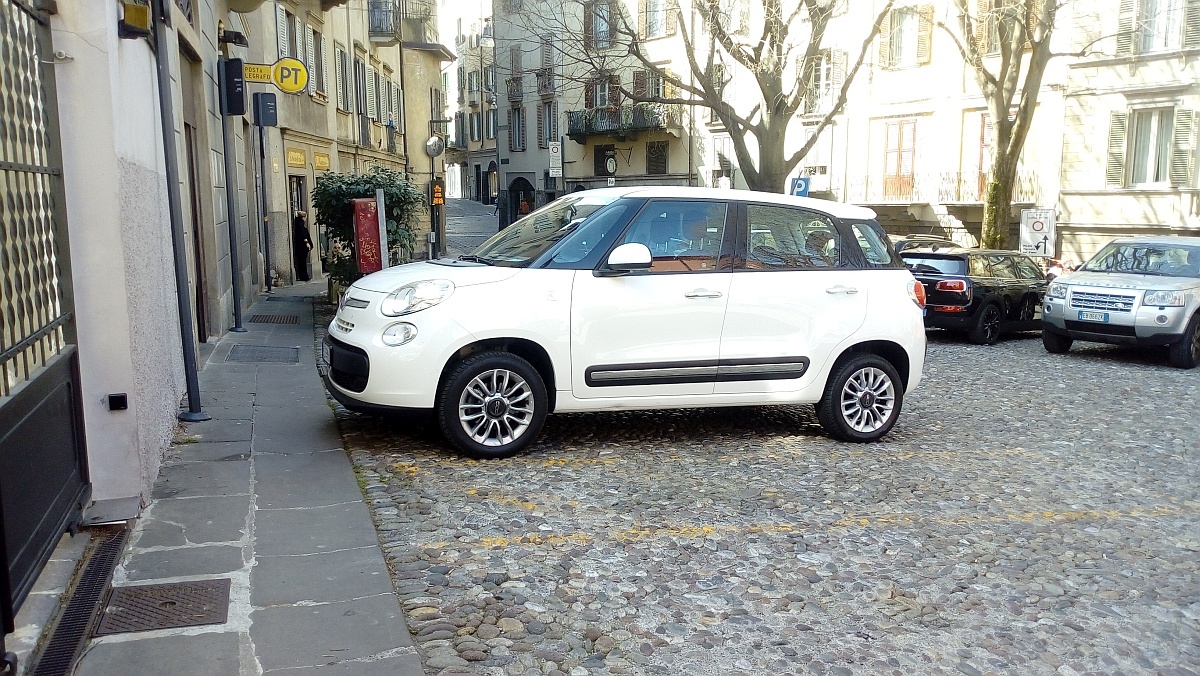
Percorso di avvicinamento in via Mario Lupo
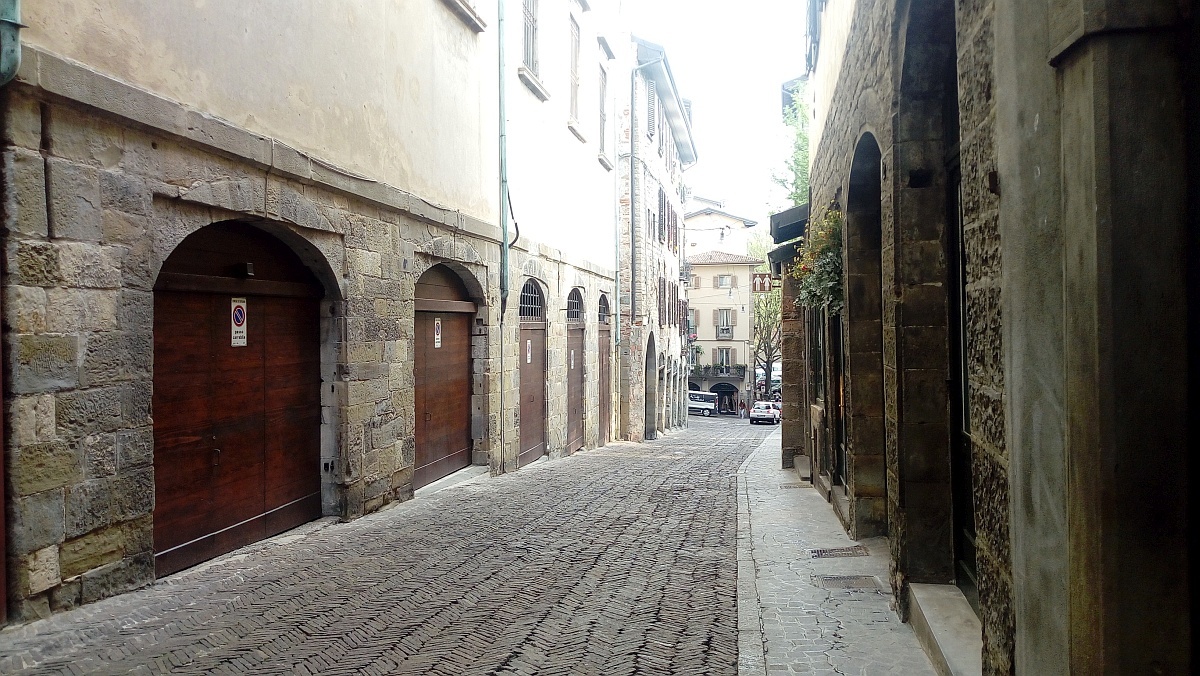
Scivolo d'ingresso
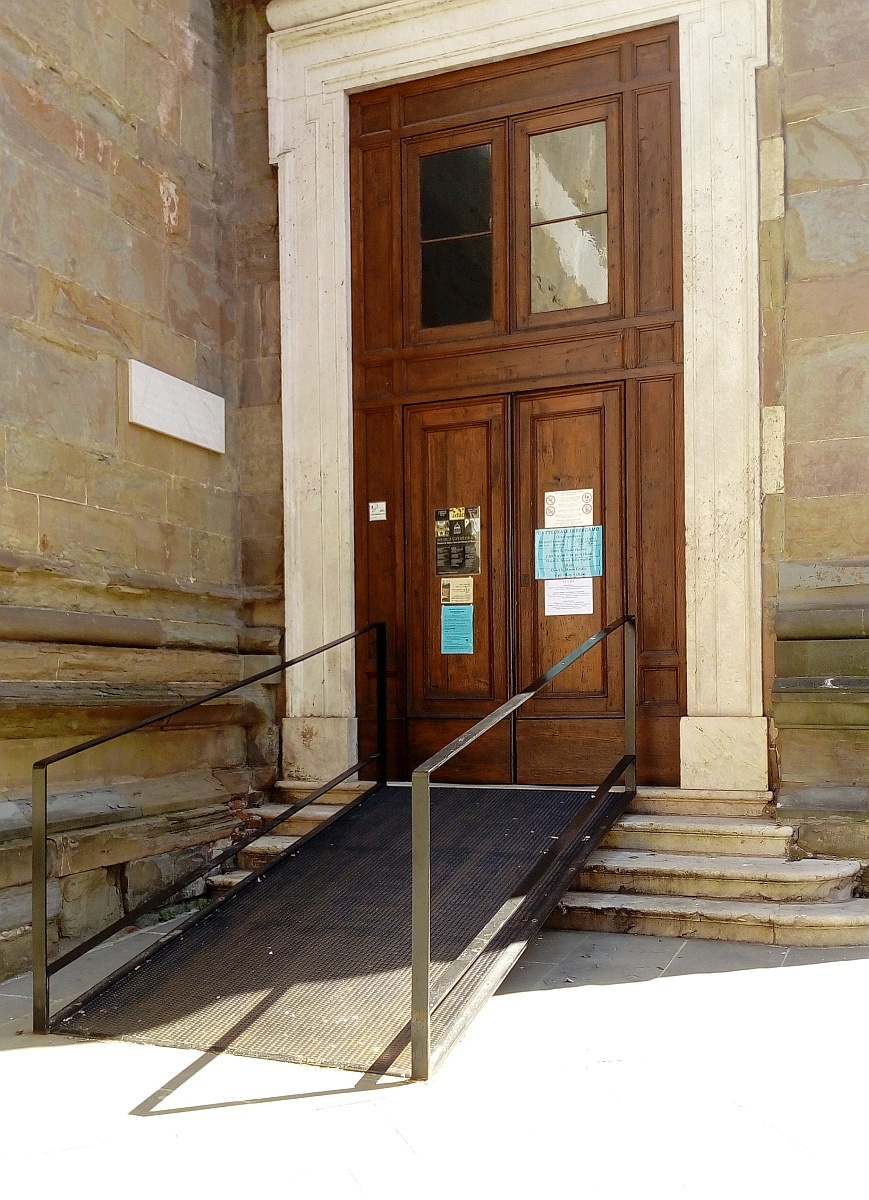
Ingresso
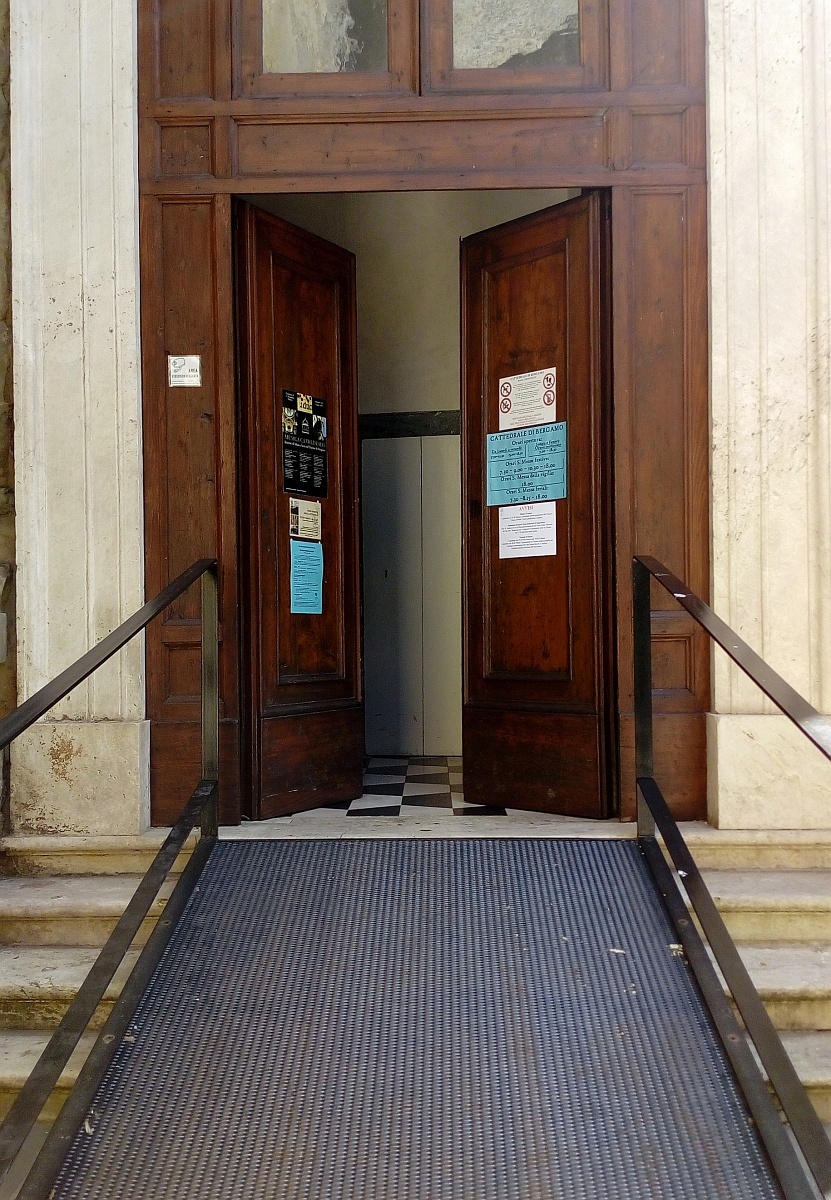
Bussola ingresso
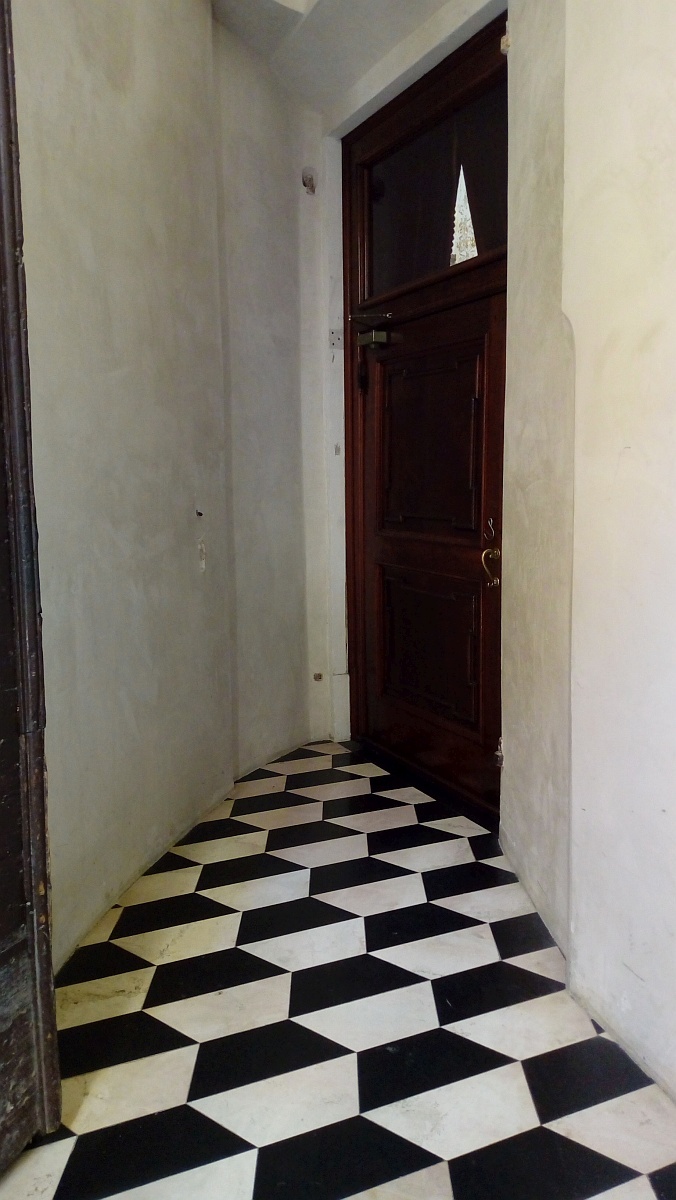
Interno
